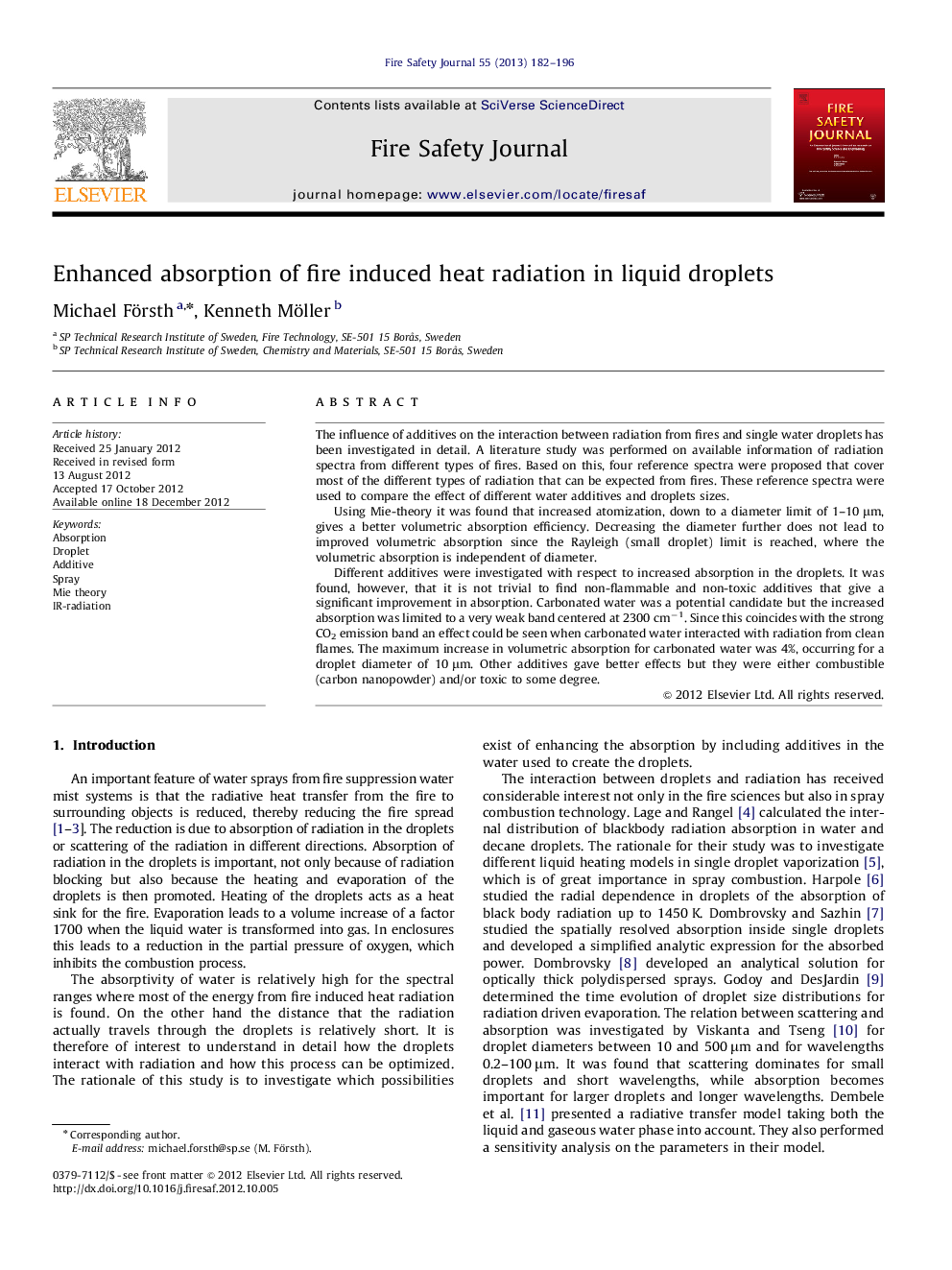| Article ID | Journal | Published Year | Pages | File Type |
|---|---|---|---|---|
| 270093 | Fire Safety Journal | 2013 | 15 Pages |
The influence of additives on the interaction between radiation from fires and single water droplets has been investigated in detail. A literature study was performed on available information of radiation spectra from different types of fires. Based on this, four reference spectra were proposed that cover most of the different types of radiation that can be expected from fires. These reference spectra were used to compare the effect of different water additives and droplets sizes.Using Mie-theory it was found that increased atomization, down to a diameter limit of 1–10 μm, gives a better volumetric absorption efficiency. Decreasing the diameter further does not lead to improved volumetric absorption since the Rayleigh (small droplet) limit is reached, where the volumetric absorption is independent of diameter.Different additives were investigated with respect to increased absorption in the droplets. It was found, however, that it is not trivial to find non-flammable and non-toxic additives that give a significant improvement in absorption. Carbonated water was a potential candidate but the increased absorption was limited to a very weak band centered at 2300 cm−1. Since this coincides with the strong CO2 emission band an effect could be seen when carbonated water interacted with radiation from clean flames. The maximum increase in volumetric absorption for carbonated water was 4%, occurring for a droplet diameter of 10 μm. Other additives gave better effects but they were either combustible (carbon nanopowder) and/or toxic to some degree.
► Four fire radiation reference spectra are proposed. ► A maximum in volumetric radiation absorption occurs for 1–10 μm droplet diameter. ► Volumetric absorption can be increased by adding additives to the water.
